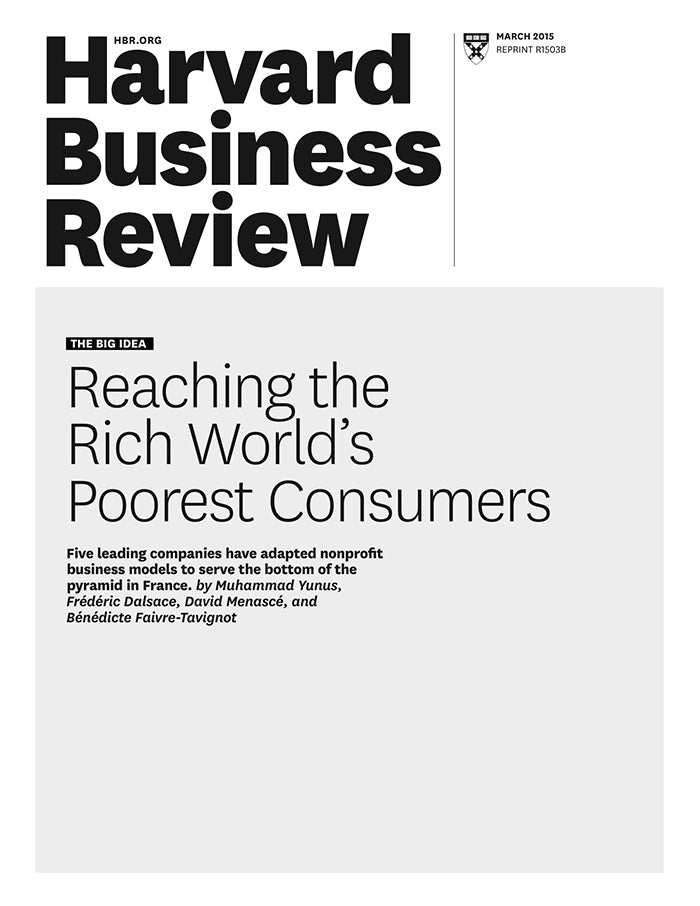Reaching the Rich World's Poorest Consumers
受取状況を読み込めませんでした
Almost 120 million people in the European Union are classified as at risk of poverty or social exclusion. Although many companies offer low-cost products and services, they have largely ignored the needs of these consumers. In this article the founder of Grameen Bank and his coauthors describe how five leading companies, working through the not-for-profit Action Tank, have developed "social business" models to serve the bottom of the pyramid in France. Those companies include Danone, which works with the French Red Cross to provide low-income parents with affordable and nutritious food for children aged six months to 24 months; Essilor, which provides easily affordable reading glasses to poor pensioners; and Renault, whose project Mobiliz aims to resolve transportation issues for poor people. In rural areas without public transportation, that involves a network of "solidarity garages" that repair damaged or broken cars at a nominal cost. A social business has three characteristics: It seeks to alleviate social problems; it must be run sustainably; and any profits must be reinvested in the company rather than funneled back to shareholders. Unlike a low-cost business, a social business determines up front who will be eligible for its offer and strives to maintain high quality in its product or service. The spillover effects of creating one may in the long run be as commercially valuable as the profits of a low-cost business. Those effects include uncovering opportunities for innovation in new markets, motivating employees, and enhancing the company's reputation.
【書誌情報】
ページ数:9ページ
サイズ:A4
商品番号:HBSP-R1503B
発行日:2015/3/1
登録日:2015/3/27


